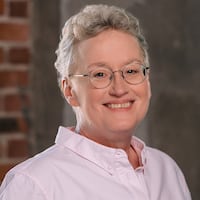Co-founded in 2011 by John F. Maguire, chief technology officer, the company makes software for advanced material manufacturing and processing. The product is designed to give businesses desk-top super-computing capability.
The software can be used to make components more rapidly and with less waste, said Maguire. Applications include 3-D printing, research and development, and workforce training, he said.
Accelerant brought in Polychron, a veteran of eight startups and turnarounds, six acquisitions and four initial public stock offerings. With his business and sales background, Polychron focuses on running the company while Maguire and the other founders focus on the product.
Scientific Simulation Systems received a $500,000 Accelerant loan, seed money that Polychron said was “really important to get this thing off the ground.”
Accelerant also paid for a $26,000 analysis of the technology by Wright Brothers Institute, which Polychron said concluded “this is breakthrough stuff, this is absolutely amazing. That gave us the confidence and credibility of a third party.”
The investment is paying off, with the company winning a Pentagon contract worth nearly $1 million for the software to be used in corrosion prediction on ships, Maguire said.
Scientific Simulations Systems currently employs five people and expects to eventually have up to 25 in Dayton. Asked if the company has turned a profit, Maguire grinned and said, “We’re doing OK.”
Polychron also serves as part-time chief executive of a second, unrelated company called JibeCast LLC, which also received help from Accelerant.
Polychron said JibeCast is a “software as a service video platform” for businesses to secure, manage and share their proprietary video content. He said Accelerant loaned it $400,000 in initial seed money and the company has lined up a major Silcon Valley investor and is hiring. He expects the staff of three will expand to six or eight.
“When I came to Dayton, which is my first time with a smaller community, it became very clear to me that Dayton was something that could really be put on the map, and I think high tech is the way to go,” Polychron said. “With the cost of living here and the access to people on the (Wright-Patterson Air Force) Base, all the ingredients are here.”
About the Author
